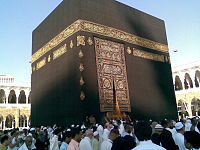
RNA - Nearly 1.5 million Muslim pilgrims from across the world are to begin their Hajj rituals by converging at the plain of Arafat on the outskirts of Islam’s holiest city of Makkah in Saudi Arabia.
The worshipping rituals in at least once-in-a-life-time spiritual journey, mandatory for any able-bodied adult Muslim, will begin Thursday evening at Mount Arafat, where the pilgrims will stay and engage in religious rituals overnight. The pilgrims will then spend the entire Friday at the holy site, continuing to pray while refraining from committing any sort of sins or engaging in material affairs. On Saturday, which marks the Eid al-Adha feast, the pilgrims will begin performing another part of the Hajj rituals, referred to as Rami al-Jamarat or stoning pillars symbolizing Satan in Mina. The stoning ritual denotes the rejection of sins and temptations.
Following the stoning ritual, the pilgrims will then shave their heads or cut a small portion of their hair for the symbolic renewal of their faith and sincere submission to God, the Creator. The highly sacred religious ceremonies, highlighting the unity of God and total submission to His commandments and decrees, will continue until Monday.
Making the Hajj pilgrimage and performing all of its rituals is one of the central pillars of Islam. The pilgrims who come to Makkah are supposed to perform the minor Hajj once they reach the holy city. They enter the state of ihram before coming to Makkah, which means they are prohibited from a number of acts. The first rite pilgrims have to carry out in Makkah is called tawwaf or circumambulating the Ka’bah in the Grand Mosque seven times counter-clockwise.
For Hajj pilgrims, the Ka’bah, also known as the Sacred House or the House of God, is the centerpiece of their journey. The pilgrims circle around it seven times and praise God. The second rite of the Hajj pilgrimage is called sa’i. In this stage, the pilgrims travel seven times between two hills called Safa and Marwah. The small mountains have now become part of the Grand Mosque.
The ritual commemorates the attempt by Hagar, Prophet Abraham’s wife, to find water for her son.
PressTV
111/112